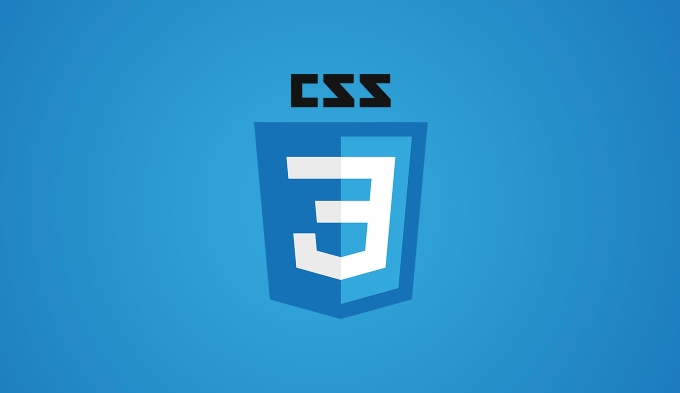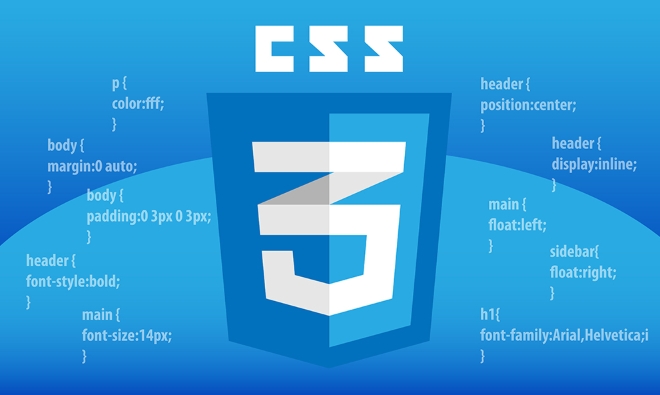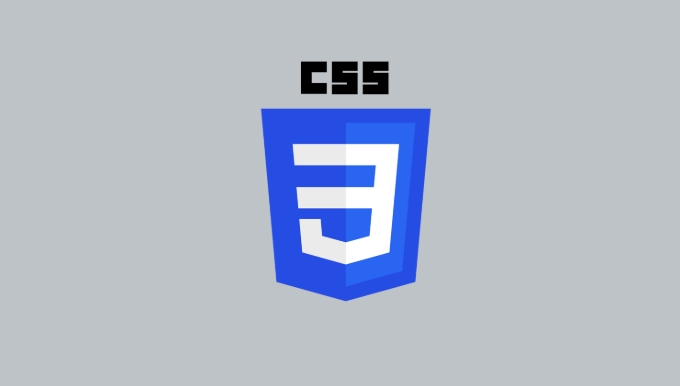Controlling content overflow with CSS overflow property options
Jul 14, 2025 am 01:17 AMThe CSS overflow property controls how content is handled when it overflows its container, with values like visible, hidden, scroll, and auto. 1. visible allows content to spill out by default; 2. hidden clips overflow content; 3. scroll adds permanent scrollbars; 4. auto shows scrollbars only when needed. Use overflow: hidden to prevent layout shifts or auto for dynamic content areas. In responsive design, combine overflow: auto with text-overflow: ellipsis for controlled text truncation while ensuring accessibility.

When content inside an element overflows its container, the CSS overflow property gives you control over how that overflow is handled. It’s a straightforward but powerful tool when dealing with layout issues.

Understanding the Basic Values
The overflow property has several common values: visible, hidden, scroll, and auto. These determine what happens when content exceeds the boundaries of its container.

- visible: This is the default. Content will spill out of the container and remain visible.
- hidden: Any overflowing content is clipped and not visible.
- scroll: Adds scrollbars to the container regardless of whether there's overflow or not.
-
auto: Similar to
scroll, but scrollbars only appear when needed.
Use these based on your layout needs. For example, setting overflow: hidden can help clean up unexpected layout shifts, while overflow: auto ensures users can access all content without breaking the design.
When to Use Scroll vs Auto
Choosing between scroll and auto depends on user experience and design consistency.

If you want a consistent scrollbar appearance—like in a fixed-size sidebar—you might prefer scroll. This avoids layout shifts when content changes size slightly.
On the other hand, auto is more flexible. It keeps the interface cleaner by showing scrollbars only when necessary. That’s useful for dynamic content areas like chat windows or comment sections where the amount of text can vary.
Just keep in mind that scroll forces scrollbars to always show, which may look odd on some devices or layouts. Test both options if you're unsure which fits better.
Handling Overflow in Responsive Design
In responsive layouts, content behavior across different screen sizes matters a lot. Sometimes, text or images that fit nicely on desktop might overflow on mobile.
A common fix is using overflow: auto on containers that might hold long words or wide tables. This allows users to scroll within the box rather than affecting the whole page layout.
Another trick is combining overflow: hidden with text-overflow: ellipsis for single-line text truncation. If you need multi-line truncation, wrap the text in a fixed-height container and set overflow: hidden.
Be careful not to overuse overflow: hidden—important content might get cut off without users realizing it.
That’s basically how you handle content overflow with the overflow property. Not too complicated once you know which value does what and when to use it.
The above is the detailed content of Controlling content overflow with CSS overflow property options. For more information, please follow other related articles on the PHP Chinese website!

Hot AI Tools

Undress AI Tool
Undress images for free

Undresser.AI Undress
AI-powered app for creating realistic nude photos

AI Clothes Remover
Online AI tool for removing clothes from photos.

Clothoff.io
AI clothes remover

Video Face Swap
Swap faces in any video effortlessly with our completely free AI face swap tool!

Hot Article

Hot Tools

Notepad++7.3.1
Easy-to-use and free code editor

SublimeText3 Chinese version
Chinese version, very easy to use

Zend Studio 13.0.1
Powerful PHP integrated development environment

Dreamweaver CS6
Visual web development tools

SublimeText3 Mac version
God-level code editing software (SublimeText3)

Hot Topics
 What is 'render-blocking CSS'?
Jun 24, 2025 am 12:42 AM
What is 'render-blocking CSS'?
Jun 24, 2025 am 12:42 AM
CSS blocks page rendering because browsers view inline and external CSS as key resources by default, especially with imported stylesheets, header large amounts of inline CSS, and unoptimized media query styles. 1. Extract critical CSS and embed it into HTML; 2. Delay loading non-critical CSS through JavaScript; 3. Use media attributes to optimize loading such as print styles; 4. Compress and merge CSS to reduce requests. It is recommended to use tools to extract key CSS, combine rel="preload" asynchronous loading, and use media delayed loading reasonably to avoid excessive splitting and complex script control.
 External vs. Internal CSS: What's the Best Approach?
Jun 20, 2025 am 12:45 AM
External vs. Internal CSS: What's the Best Approach?
Jun 20, 2025 am 12:45 AM
ThebestapproachforCSSdependsontheproject'sspecificneeds.Forlargerprojects,externalCSSisbetterduetomaintainabilityandreusability;forsmallerprojectsorsingle-pageapplications,internalCSSmightbemoresuitable.It'scrucialtobalanceprojectsize,performanceneed
 Does my CSS must be on lower case?
Jun 19, 2025 am 12:29 AM
Does my CSS must be on lower case?
Jun 19, 2025 am 12:29 AM
No,CSSdoesnothavetobeinlowercase.However,usinglowercaseisrecommendedfor:1)Consistencyandreadability,2)Avoidingerrorsinrelatedtechnologies,3)Potentialperformancebenefits,and4)Improvedcollaborationwithinteams.
 CSS Case Sensitivity: Understanding What Matters
Jun 20, 2025 am 12:09 AM
CSS Case Sensitivity: Understanding What Matters
Jun 20, 2025 am 12:09 AM
CSSismostlycase-insensitive,butURLsandfontfamilynamesarecase-sensitive.1)Propertiesandvalueslikecolor:red;arenotcase-sensitive.2)URLsmustmatchtheserver'scase,e.g.,/images/Logo.png.3)Fontfamilynameslike'OpenSans'mustbeexact.
 What is Autoprefixer and how does it work?
Jul 02, 2025 am 01:15 AM
What is Autoprefixer and how does it work?
Jul 02, 2025 am 01:15 AM
Autoprefixer is a tool that automatically adds vendor prefixes to CSS attributes based on the target browser scope. 1. It solves the problem of manually maintaining prefixes with errors; 2. Work through the PostCSS plug-in form, parse CSS, analyze attributes that need to be prefixed, and generate code according to configuration; 3. The usage steps include installing plug-ins, setting browserslist, and enabling them in the build process; 4. Notes include not manually adding prefixes, keeping configuration updates, prefixes not all attributes, and it is recommended to use them with the preprocessor.
 What are CSS counters?
Jun 19, 2025 am 12:34 AM
What are CSS counters?
Jun 19, 2025 am 12:34 AM
CSScounterscanautomaticallynumbersectionsandlists.1)Usecounter-resettoinitialize,counter-incrementtoincrease,andcounter()orcounters()todisplayvalues.2)CombinewithJavaScriptfordynamiccontenttoensureaccurateupdates.
 CSS: When Does Case Matter (and When Doesn't)?
Jun 19, 2025 am 12:27 AM
CSS: When Does Case Matter (and When Doesn't)?
Jun 19, 2025 am 12:27 AM
In CSS, selector and attribute names are case-sensitive, while values, named colors, URLs, and custom attributes are case-sensitive. 1. The selector and attribute names are case-insensitive, such as background-color and background-Color are the same. 2. The hexadecimal color in the value is case-sensitive, but the named color is case-sensitive, such as red and Red is invalid. 3. URLs are case sensitive and may cause file loading problems. 4. Custom properties (variables) are case sensitive, and you need to pay attention to the consistency of case when using them.
 What is the conic-gradient() function?
Jul 01, 2025 am 01:16 AM
What is the conic-gradient() function?
Jul 01, 2025 am 01:16 AM
Theconic-gradient()functioninCSScreatescirculargradientsthatrotatecolorstopsaroundacentralpoint.1.Itisidealforpiecharts,progressindicators,colorwheels,anddecorativebackgrounds.2.Itworksbydefiningcolorstopsatspecificangles,optionallystartingfromadefin






